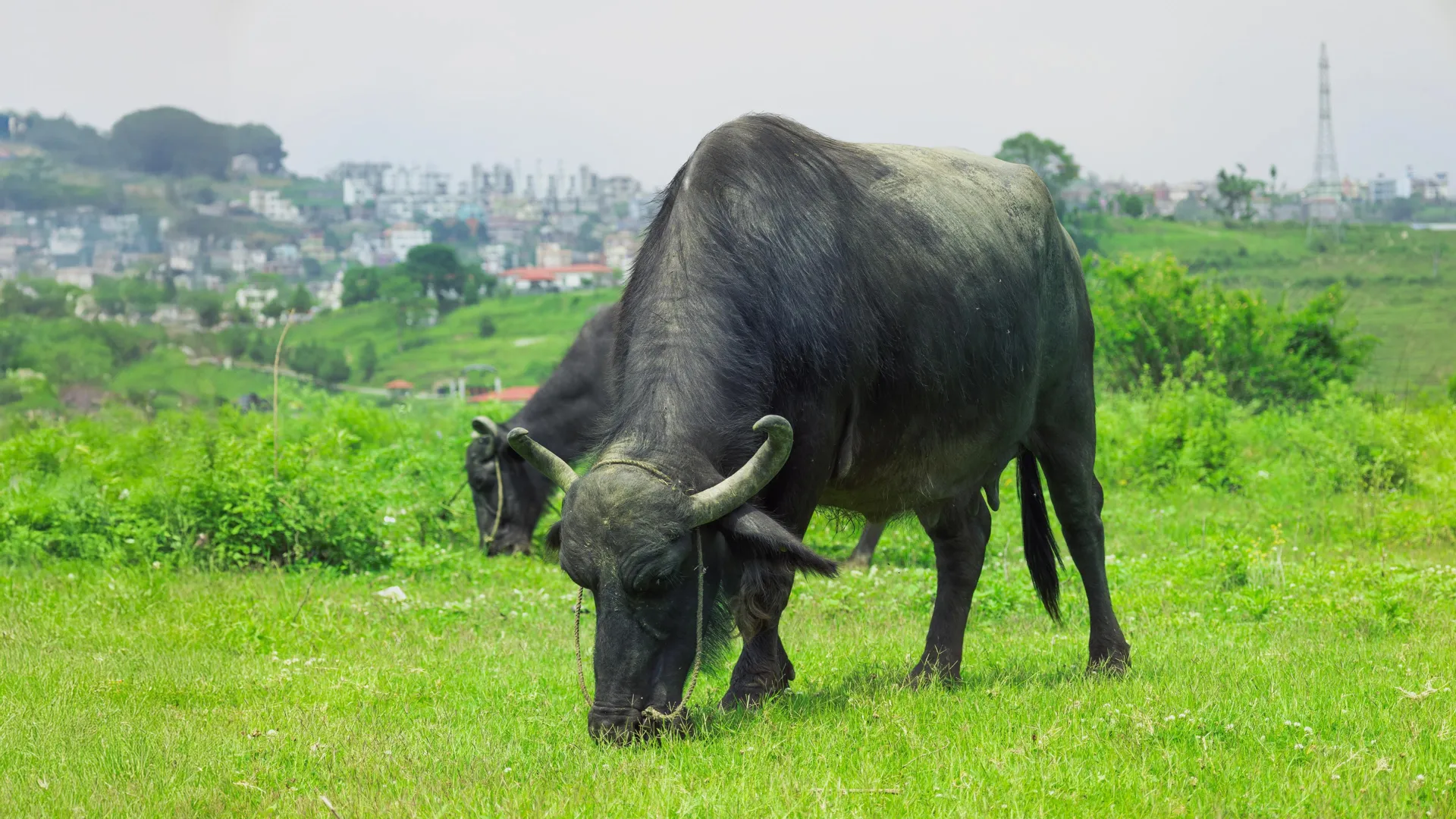Where wild buffalo roam free — and collide with city life in Hong Kong
Diverse attitudes to ruminants as neighbors
- Date:
- July 8, 2025
- Source:
- City University of Hong Kong
- Summary:
- Feral water buffalo now roam Hong Kong s South Lantau marshes, and a 657-person survey shows they ignite nostalgia, wonder, and worry in equal measure. Many residents embrace them as living links to a fading rural past and potential conservation icons, yet others fear road blockages, safety hazards, and ecosystem impacts. Attitudes skew more positive among younger locals familiar with wildlife, while concern rises in groups with less rural exposure.
- Share:

Most people associate Hong Kong with skyscrapers and shopping malls, but a small population of feral water buffalo calls the marshlands of South Lantau Island home. And they're sparking a mix of curiosity, concern, and connection among locals.
A new study published in People and Nature in July 2025 led by City University of Hong Kong (CityUHK) examines how Hong Kong residents feel about their unusual neighbors. These findings suggest opinions are about as diverse as the city itself.
The article is titled "Public attitudes and values regarding a semi-urban feral ungulate."
"Some see the buffalo as a living link to the territory's rural past, while others worry about safety, environmental impact, or traffic disruptions," says lead investigator Alan McElligott, a specialist in animal behavior and welfare at the Jockey Club College of Veterinary Medicine and Life Sciences (JCC), CityUHK.
So while Hong Kong is known as a bustling financial hub, feral buffalo roaming semi-urban areas may seem surprising. "Yet they provide an accessible link to nature and an opportunity to understand human-animal interactions in such landscapes," adds Kate Flay, a specialist in livestock animal health at JCC.
The team based their findings on 657 responses -- 550 online and 107 through in-person interviews (with 56 participants leaving additional comments) -- collected from a public survey distributed in the last months of 2023 and at the start of 2024.
The key insights from the CityUHK-led research are that public attitudes toward the buffalo fall into four key categories: appreciation and conditional acceptance of their presence; concern about community impacts and calls for better management; seeing them as valuable for conservation and education; as well as individual perceptions formed through everyday encounters. For each of these, neutral responses to the buffalo were most frequent, followed by positive and then negative responses.
Regarding the questions on Buffalo Tolerance and Appreciation, 61% of the responses were neutral, 25% highly positive, and 14% highly negative, with effects of age, gender, ethnicity, and birthplace. Looking at the questions on Buffalo Social Benefits and Advocacy, 66% of responses were neutral, 19% highly positive, and 15% highly negative, with significant effects of age and ethnicity.
A similar pattern was found for questions on Preservation and Education, where 46% of the responses were neutral, 41% highly positive, and 13% highly negative, with effects of gender, ethnicity, and birthplace. In the final section on Impacts on Daily Life, 49% of the responses were neutral, 27% highly positive, and 23% highly negative, with significant effects of age and ethnicity.
"Demographic factors also correlate with opinions, with differences based on age, gender, ethnicity, birthplace, and whether respondents lived on Lantau," explains another of the investigators, Hannah Mumby, a specialist in applied behavioral ecology and conservation at the University of Hong Kong. "Emotional responses were common in interviews, with a majority expressing fondness for the buffalo or neutral attitudes, and a minority noting concern over safety risks."
The team also found significant variation among participants living in the three districts in Hong Kong represented in the survey, such as whether they were residents of South Lantau Island, where the feral buffalo roam.
"We found that familiarity with wildlife in rural areas often leads to more positive perceptions," McElligott says.
The key takeaway is that we recognise residents' diverse views on accepting the buffaloes' presence. These views can be considered to ensure that humans and buffalo share the landscape harmoniously.
Story Source:
Materials provided by City University of Hong Kong. Note: Content may be edited for style and length.
Journal Reference:
- Danhe Yang, Debottam Bhattacharjee, Kate J. Flay, Yifu Wang, Hannah S. Mumby, Alan G. McElligott. Public attitudes and values regarding a semi‐urban feral ungulate. People and Nature, 2025; DOI: 10.1002/pan3.70082
Cite This Page: